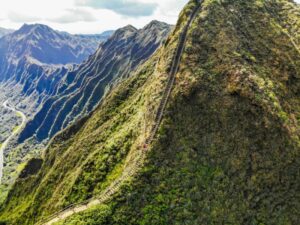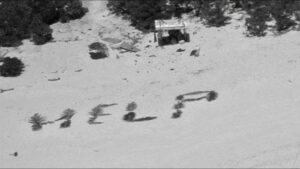In the history of exploration by outsiders, tales of success often contrast with sagas of misadventure and tragedy. Those indigenous to the country were always better positioned for a smooth journey. They traveled with ease through wildernesses that often destroyed explorers from away. Sometimes these local people have adapted biologically, such as the Sherpa’s more efficient oxygen delivery to tissues. Other times, the adaptations have been cultural — a profound knowledge of where to find food or water in seemingly barren wastes, and specialized tools for hunting or travel that allowed them to become one with the environment rather than butt against it through attempts to “conquer” their way forward.
Typically, these local travelers were unknown, but a few have emerged. Here, we look at 10 notable indigenous explorers from past and present.
1. Sacagawea

Sacagawea acted as an interpreter and guide for the Lewis and Clark expedition. Born in Idaho into a Shoshone family — and abducted at the age of 12 by a group of Hidatsa — she stayed with the pioneering duo for their entire journey. She led all of the liaisons with the numerous tribes they encountered and was the first Native American woman to have joined a Western expedition.
2. Gadiel Sánchez Rivera

Gadiel Sánchez Rivera (left) with Ed Stafford. Photo: Facebook.com/pg/JungleChoAventura/
In 2008, Peruvian Gadiel Sánchez Rivera partnered with British explorer Ed Stafford to travel the length of the Amazon on foot over two years. Growing up on a rural farm near Satipo under tough economic circumstances, Rivera’s first exposure to an adventurous life came when he took up a job with a local logging business, which required traveling to remote areas. Rivera eventually quit after being unable to justify deforesting a landscape that he had come to love. Since then, he’s taken part in a circumnavigation of Lake Titicaca with Belgian Louis-Philippe Loncke; guided Polish adventurer Marcin Gieniczko safely through jungle controlled by drug lords, and joined Laura Bingham –- Ed Stafford’s wife –- on a trip from Ecuador to Argentina.
3. Pius “Mau” Piailug

Pius “Mau” Piailug. A still from the film WAYFINDERS: A Pacific Odyssey.
Pius “Mau” Piailug of Micronesia navigated a traditional Polynesian double-hulled canoe for 4,400km from Hawaii to Tahiti in 1976. Piailug achieved this feat without instruments. Instead, he used traditional wayfinding methods, which involved reading the night sky, the ocean swells, the wind and the presence of specific fish and birds. The successful Pacific crossing served as proof that Oceania’s ancient maritime ancestors had sufficient navigational skill and open-ocean canoe technology for lengthy two-way voyages from Asia. Previously, many believed that Oceania was first populated by South Americans, who traveled with the prevailing winds.
4. Nukapinguaq

Nukapinguaq.
Nukapinguaq was one of the most celebrated of all Greenland guides –- a Tenzing Norgay of the High Arctic. Almost every major expedition between 1913 and 1938 engaged the five foot six Nukapinguaq. His prime coincided with the era of great long-distance expeditions. In one five-year period, he led spring journeys of 2,100, 1,300, 2,700, 1,600 and 1,300 kilometres. Thanks to his legendary hunting skills, no one went hungry. He could pick the best route through rough ice and judge the safety of newly frozen leads at a glance.
5. Bungaree

A painting of Bungaree by 19th-century British artist Augustus Earle.
In the early 1800s, Bungaree became the first Australian to circumnavigate the continent. He worked as a guide, interpreter and negotiator for Matthew Flinders’ cartographic expedition, which aimed to map the remaining blank spots along the coast. As a Kuringgai Aboriginal Australian –- from Broken Bay, north of Sydney –- Bungaree was instrumental to the team’s success. He acted as a go-between during encounters with other indigenous groups, despite the language barriers that he too struggled with. He spent his later years educating new visitors to Australia on Aboriginal culture and serving as chief in his local community in Broken Bay.
6. Evgenia Arbugaeva

A screengrab from Evgenia Arbugaeva’s Stories From the Russian Arctic presentation at National Geographic’s Storytellers Summit in 2020.
Evgenia Arbugaeva is a Yakut photographer from Tiksi, a Russian Arctic coastal town overlooking the Laptev Sea. After finishing university in Moscow, Arbugaeva returned to her homeland and spent a year traveling with and working for reindeer herders, while photographing them. She’s also documented the lives of Siberian mammoth tusk hunters on Bolshoy Lyakhovskiy Island and traveled by icebreaker to Arctic Russia’s 22 weather stations as part of a documentary photography project.
7. Lei Diansheng

A screenshot of Lei Diansheng’s 2017 book Belief — Ten Years Walking China.
Lei Diansheng of China completed a decade-long 81,000km walk in China in 2012. Diansheng was born into a poor family in Harbin, in the country’s northeast Heilongjiang Province, and was orphaned as a child. He drew his inspiration for the solo odyssey from the 17th-century Chinese travel writer Xu Xiake and from his mother’s premature death. He wove his way throughout the country’s 26 provinces, walking up to 40km per day, wore out 52 pairs of shoes, lost seven cameras and had dozens of close calls. He finished his journey in Xinjiang’s Lop Nur, a remote salt lake between the Kumtag and Taklamakan deserts, where Chinese researcher Peng Jiamu disappeared in 1980, and 1996 explorer Yu Chunshun died of dehydration.
8. Phurba Tashi

Phurba Tashi.
Sherpa Phurba Tashi has completed more ascents of 8,000m peaks than anyone else in the world: 30 in total, including Everest, Cho Oyu, Manaslu, Lhotse, and Shishapangma. In 2007, he also completed the first double traverse of Everest with David Tait, climbing from the north side, descending the south side, then returning three days later.
9. Musallem Faraj

Musallem Faraj (right). Photo: Facebook.com/sinaitrail/
Bedouin Musallem Faraj is a Sinai-based guide from the Tarabin tribe. He’s spent three decades guiding visitors and is one of the creators of the Sinai Trail, a 550km route that winds its way through Egypt’s Sinai Peninsula. Faraj also connected a 200km+ network of trails into the Abraham Path.
10. Lorena Ramírez Hernández

Lorena Ramírez Hernández running in her traditional Rarámuri gear.
Lorena Ramírez Hernández is an ultra-marathon runner and a Rarámuri, also known as a Tarahumara, which is a group of indigenous people from the state of Chihuahua, Mexico. The Rarámuri are renowned for their innate long-distance running abilities. They run in just a pair of leather sandals known as huaraches. Without government support, Hernández has won several 100km+ races and set herself on a path to become one of the most adept ultra-marathoners in the world.
Beyond this list, there are many more thousands to consider across every imaginable landscape, country and era. In an increasingly multicultural and interconnected world, we must remain open-minded on how we define indigenous: especially since cultural identity can be complicated and fluid, and since outsiders can also assimilate with great success into alien worlds.






